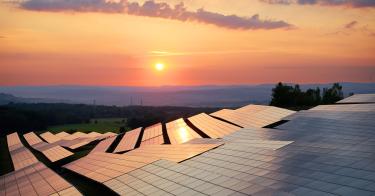This article is an excerpt from the “2020 Mandate for Leadership: A Clear Vision for the Next Administration.” It looks back at policy decisions made by the Trump administration over the past four years. You can purchase your copy of “Mandate 2020” here.
Since publication of the last Mandate for Leadership, the Trump administration has taken productive steps to open access to energy development and reduce the regulatory burdens that have driven up energy costs while producing minimal to no environmental benefits.
Withdrawing the signature pieces of the Obama administration’s climate legacy—the Clean Power Plan and the New Source Performance Standards for new power plants—provided much-needed regulatory relief. The president also announced the intent of the U.S. to withdraw from the costly and ineffective Paris climate agreement.

The administration’s Safer Affordable Fuel-Efficient Vehicles Rule provided modifications to Obama-era corporate average fuel economy standards with a “preferred alternative” for model years 2021 through 2026. The administration’s revision is a welcome victory both for consumers’ wallets and for consumer choice.
The president approved the Keystone XL pipeline, and his executive orders on the National Environmental Policy Act and energy infrastructure wisely called for modernization, improved efficiency, and good-governance measures for clarity and consistency across agencies in key permitting and regulatory activities.
The Department of Energy took action to expedite small-scale natural gas exports and relieve the permitting backlog facing the Federal Energy Regulatory Commission, and the Tax Cuts and Jobs Act opened Alaska’s coastal plain (the Arctic National Wildlife Refuge) for energy exploration and production.
The energy potential of the section now open is enormous, and will provide much-needed economic opportunity for remote communities, in addition to which the environmental footprint is minimal.
In other instances, not doing anything at all was a win for energy consumers.
So far, the current administration has backed off from subsidizing specific coal and nuclear power plants. The plan would not have had any measurable impact on grid resilience and reliability but would have significantly disrupted competitive electricity markets, hurting consumers and choking off opportunities for new market entries.
President Donald Trump’s budget routinely proposed reduced spending for energy subsidies and also activities that are not legitimate functions of the federal government.
The news is not all good, however. Under this administration, the Environmental Protection Agency continues to ramp up volumetric requirements under the Renewable Fuel Standard. The mandate requires that refiners blend costly biofuels into America’s fuel supply, and the administration has catered to the special interests of the biofuels lobby at the expense of consumers.
Moreover, the Trump administration imposed tariffs on solar technology imports in 2018, and its steel and aluminum tariffs increase the cost of energy projects domestically. Borders should not mean that individuals are forced to pay artificially higher prices for energy.
Cronyism also is still prevalent in the energy sector, and the government allocates special benefits to the well-connected instead of fostering a playing field that provides opportunity for all to compete.
These subsidies obstruct the long-term success and viability of the technologies and energy sources that they are intended to promote by distorting the actual costs of energy production and interfering with the price signals by which businesses monitor supply and demand.
When the government plays favorites, valuable resources shift to less productive uses.
Removing the cronyism and corporate welfare that are pervasive in energy markets is no easy feat. The Trump administration’s attempt to rescind unused funds in the U.S. Department of Energy Advanced Technology Vehicles Manufacturing loan program provides a good case study.
In handing out only five loans, the program has wasted taxpayer dollars by subsidizing economic losers (Fisker) and has promoted corporate welfare by subsidizing well-off companies (Nissan and Ford). The program has $4.3 billion remaining but has been idle for more than eight years without a new loan administered by the department.
The Congressional Budget and Impoundment Control Act of 1974 authorizes the president to rescind funding previously enacted into law, and the White House appropriately offered a $15 billion rescissions package that included the Advanced Technology Vehicles Manufacturing loan program.
Special interests prevailed, however, and the program remains in place.
This piece originally appeared in The Daily Signal




